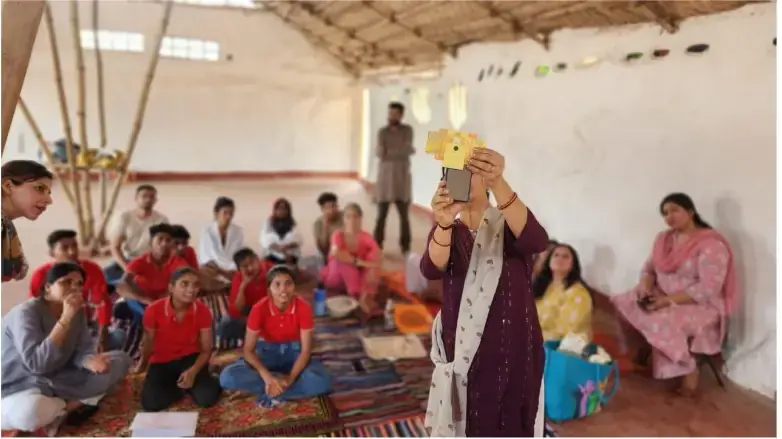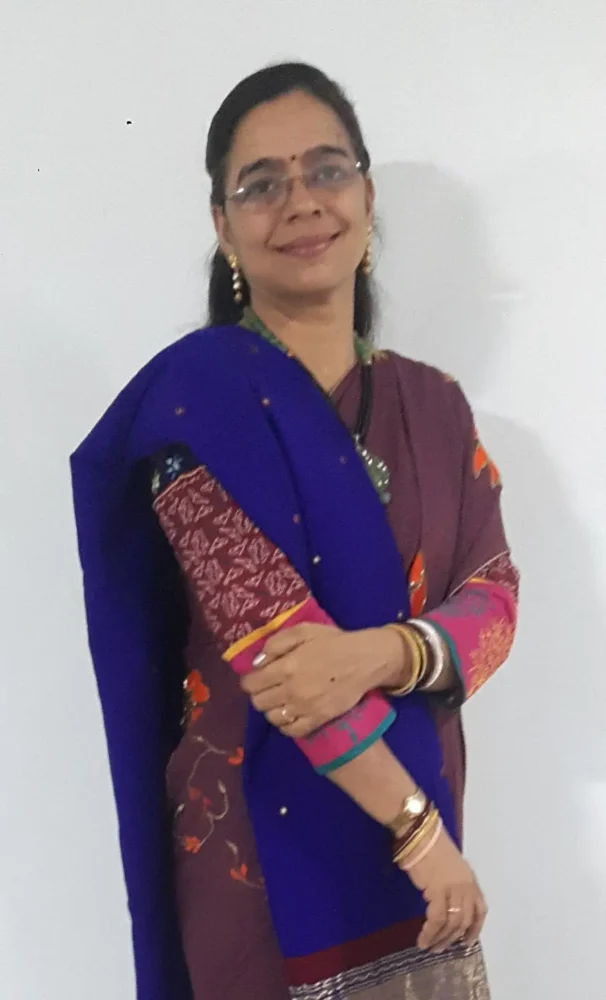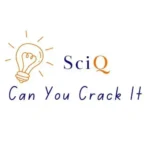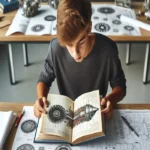Exploring the microcosm with Foldscope — Workshop with Young Explorers
Estimated reading time: 7 minutes
Critical thinking is a vital skill that is essential for success in various fields, including science, technology, engineering, and mathematics (STEM). However, many students struggle to develop this skill due to a lack of hands-on experiences and opportunities to engage with complex concepts. As a Foldscope workshops mentor who has conducted more than 150 in person workshops (Grade 4 to Postgraduate students), I witness firsthand the remarkable process by which stakeholders engage with their surroundings, take missteps, and ultimately develop their techniques for inquiry.
Observing children in a learning environment offers invaluable insights into how they acquire knowledge and evolve strategies to overcome challenges.
Methodology
The Foldscope workshops are specifically designed to encourage students to make observations, learn about measurements, and develop critical thinking skills through engaging hands-on activities. Moreover, they are conducted in an informal setup that does not require a lab, chemicals, glassware, or even tools—except for very minimal ones. We introduce them to the paper folding microscope called the Foldscope (1.0 & 2.0 version) developed by Dr. Manu Prakash at Stanford University. Students first examined the two sides of the Foldscope—blue, yellow—and the designated space for mounting the slide. As they explored this paper tool, they quickly appreciated its ease of handling and the simplicity of mounting specimens. The small black lens at the center fascinated them, as it resolved the specimen and allowed visualization when viewed under light. While adjusting the stage, they experimented with movement to screen the field and achieve a clearer view.
We use paper slides during the course of the workshops to ensure resources are cost effective. A paper slide is a small piece of paper (6 cm x 1.5 cm) folded twice with a cavity made with a scissor, covered with a cello tape piece to have a surface.
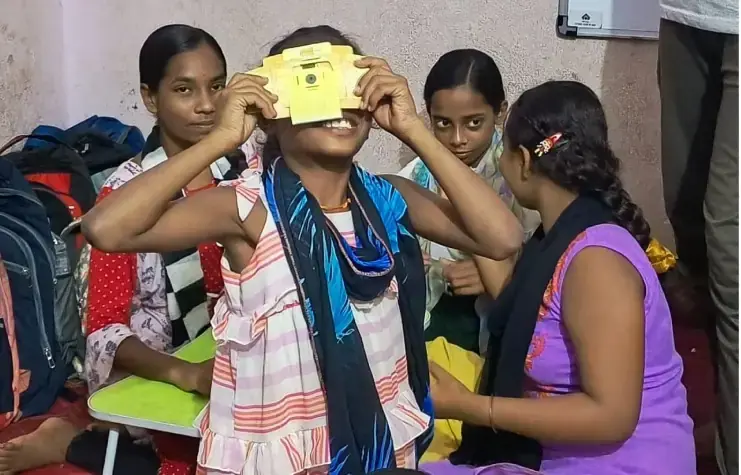
Observation
The students were encouraged to use their hands, fingers, and nails to make and tease out samples, and cello tape was provided to ensure that the samples were sealed before observation.
The hands-on component encouraged students to explore the microscopic world independently.
Despite initial challenges—where many students struggled to mount samples—their determination soon turned into enthusiasm. We mount the onion peel on this and cover it with another cello tape piece. The slide is mounted and this is where the magic begins. The breakthrough moment came when they successfully observed an onion peel under the microscope, leading to reactions of amazement and discovery. Children also like to explore different sources of light for example the light in their classroom, the sunlight from the window and a torch light to view the same sample.
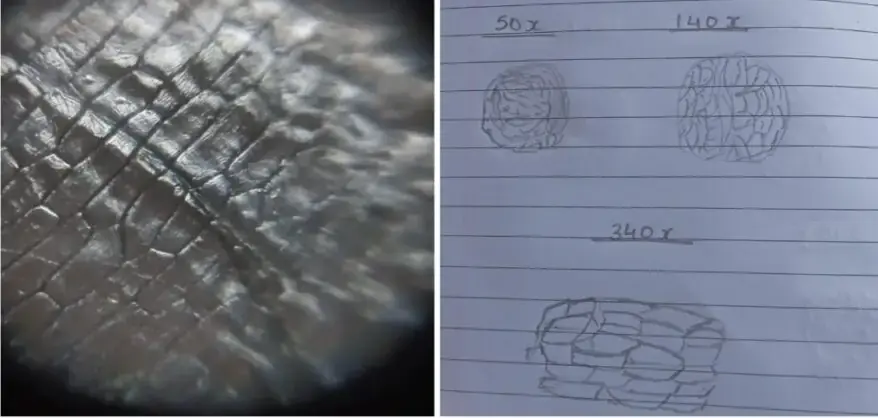
Empowerment through Observation
The experience of identifying and differentiating cells during the Foldscope workshops empowered the children. They drew their observations diligently, understanding that documentation is crucial for scientific inquiry. They began exploring more samples, including facial hair, eyebrow hair, squamous cells, and dust. When asked about using a potato as their next specimen, they eagerly planned the best way to prepare a sample.
As a facilitator/bystanders I/we choose not to give them the answer but to enable them to think and plan accordingly.
Another important attribute is their ability to connect with peers and seek solutions. This encourages engagement with different perspectives and teamwork in problem-solving. Together, they navigate sample selection or specimen mounting effectively.
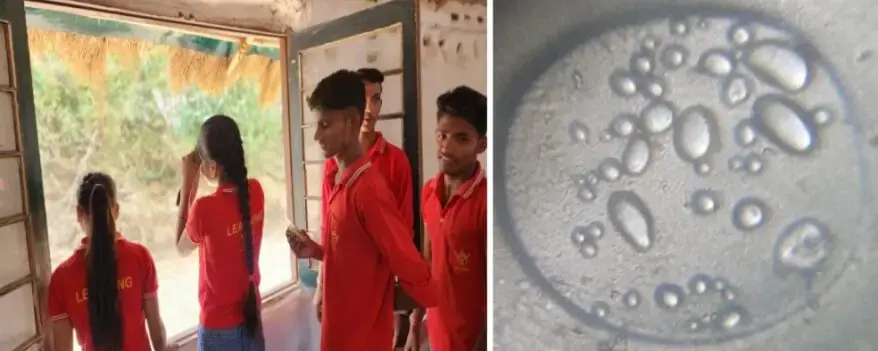
Key Observation
Children learn best through hands-on experiences. Making mistakes—improperly mounting samples or misaligning the microscope—was as important as their eventual success, fostering a growth mindset. When asked how confident they felt using the microscope after the workshop, they responded affirmatively. This engaging task prompted critical thinking and fueled excitement as they made surprising discoveries, such as recognizing differences between various hair samples.
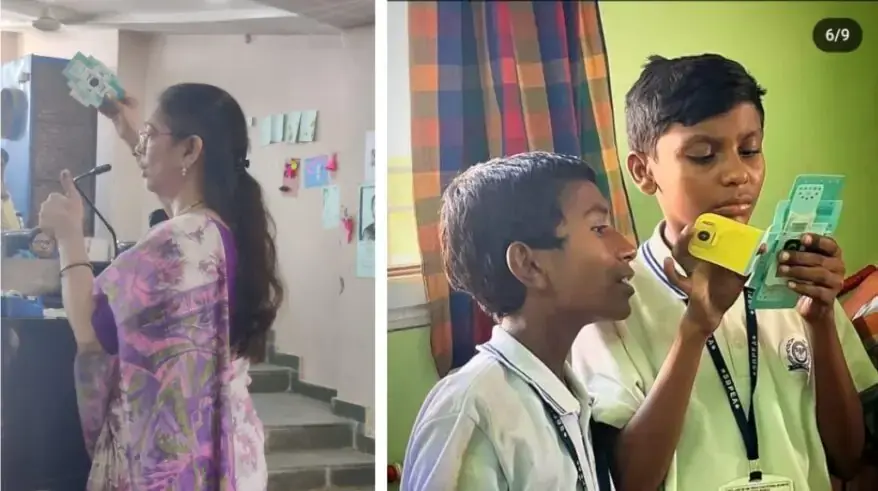
How Foldscope Workshops Encourage Hands-On Learning
Working with limited tools—just their hands, fingers, nails, and cello tape—demanded creativity and resourcefulness. The emphasis on maintaining a clean workspace instilled a sense of responsibility. Despite occasional chaos, the workshop exemplified the beauty of exploration and cooperation, with participants learning to collaborate effectively.
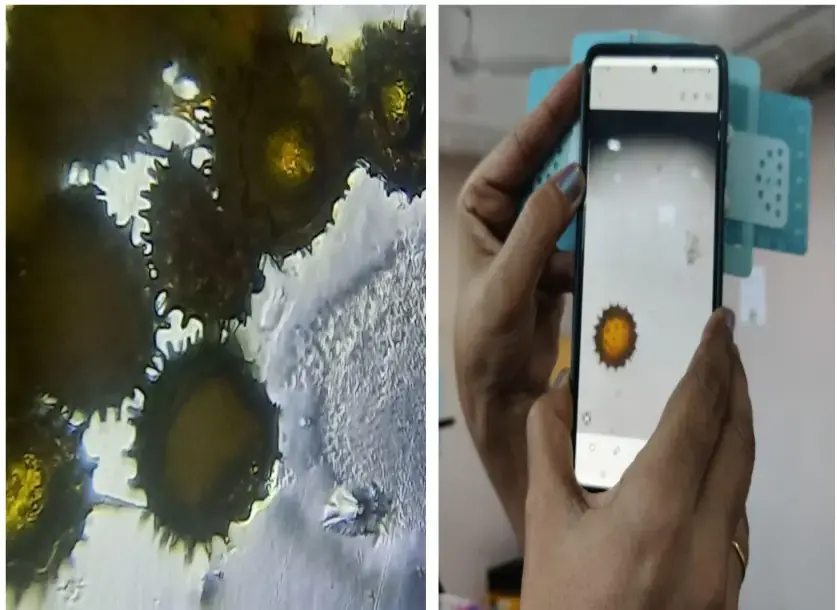
Children initially focused on a crowded field but struggled to see clearly. They then searched for areas where they could isolate a single pollen, helping them understand the need for focus in viewing a single cell. This enabled them to learn about cell structures, such as the spiny exine and inner intine of a pollen cell. They appreciated the freedom to explore independently and identify the shape and structure of samples. The flexibility to experiment enhanced their curiosity about the microscopic world, allowing the workshop to last for hours without them realizing the time.
One of the key takeaways from the workshop was the importance of patience.
Lessons in Exploration and Patience from Foldscope Workshops
The children learned that good results don’t come overnight, and that perseverance is crucial for achieving good results. They also learned to respect and trust their peers’ ideas, and to work together as a team to solve problems. The Foldscope workshop’s practical nature encouraged interaction and independence, allowing the children to analyze problems and find solutions before seeking assistance. This method of teaching facilitated a deeper understanding of concepts, providing a new perspective on biology and material science. The central lesson learned from the workshop was the importance of patience. As observed, the process of waiting for samples to settle before observation taught students that scientific exploration requires time and perseverance. Moreover, students began to appreciate that good results come from consistent effort, acknowledging that “good things take time.”
The Impact of Hands-On Learning and Foldscope workshops
The workshop’s most valuable aspect was the use of Foldscopes and the exploration of various specimens. Hands-on learning and experimentation enriched the children’s skills and eliminated fears associated with lab practicals. In conclusion, the workshop demonstrated the power of trial and error in the learning process. Allowing children to work hands-on, make mistakes, and develop their own strategies fosters deeper understanding and a lasting love for learning. Since 2018, none of the Foldscopes have torn due to mishandling, despite being made of paper.
The journey of young learners through the Foldscope workshops illustrated the power of experiential learning. As students explored the microscopic world, they gained confidence, solved challenges independently, and grew curious about their surroundings. They also discovered that not all bacteria are harmful and that the microscopic realm is diverse, sparking deeper philosophical questions about life.
Overall, the experience reinforced the importance of hands-on learning and collaborative problem-solving. It was inspiring to see how exploration, even without specialized tools, sparked a passion for science. The excitement, inquiry, and “a-ha” moments will stay with them as they grow into curious scientists.
The students also reported that the workshops helped them to develop a new appreciation for the microscopic world and the importance of microbiology in our daily lives.
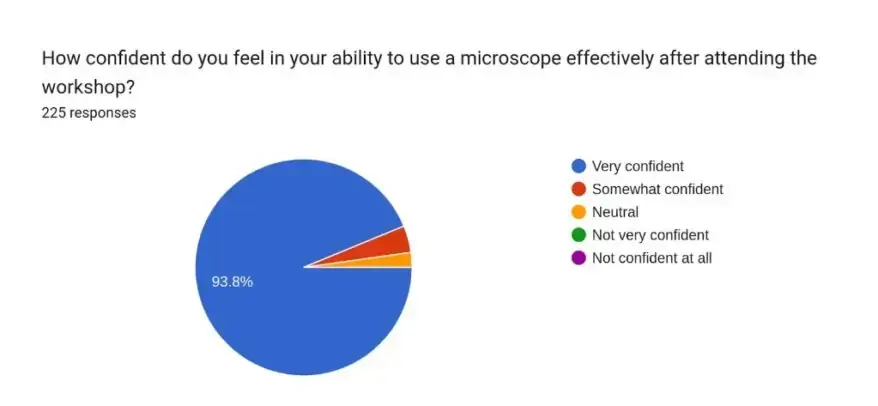
Looking Ahead
As we plan for future workshops, we aim to build on this foundation of independence and creativity, crafting a nurturing environment where curiosity thrives. Through hands-on experiments and open exploration, we will continue to inspire the next generation of thinkers, innovators, and problem solvers.
References
- Gardner, J., et al. (2023). Igniting children’s enthusiasm for microbes with an origami paper microscope. Microbiology Society. https://doi.org/10.1099/acmi.0.000587.v2
- Hughes, C. A. (2018). Effective instructional design and delivery for teaching task-specific learning strategies to students with learning disabilities. Focus on Exceptional Children, 44(2). https://doi.org/10.17161/fec.v44i2.6689
- Kulshreshtha, P., et al. (2022). Foldscope embedded pedagogy in stem education: A case study of sdg4 promotion in india. Sustainability, 14(20), 13427. https://doi.org/10.3390/su142013427
Additionally, to stay updated with the latest developments in STEM research, visit ENTECH Online. Basically, this is our digital magazine for science, technology, engineering, and mathematics. Furthermore, at ENTECH Online, you’ll find a wealth of information.
